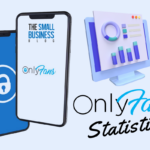Over 99% of US businesses are classified as small businesses.
They are, without doubt, the backbone of the US economy.
Of course, small businesses are the backbone of economies across the globe.
But, just how much do small businesses earn?
Naturally, the answer to this depends on a variety of factors, such as the chosen industry, product or service offered, and even the profit margins set.
It’s time to take a look at the average small business revenue and other related facts.
Post Contents
- 1 Key Statistics
- 2 Top Average Small Business Revenue Statistics in 2024
- 2.1 1. The Average Income For a Small Business With 1-4 Employees Is $347,000
- 2.2 2. Just 13.7% Of Small Businesses Generate Revenue Over $100,000 Per Year
- 2.3 3. The Average Female Small Business Owner Earns $40,000 Less Than Their Male Counterparts
- 2.4 4. On Average, Younger Business Owners Have Higher Revenues
- 2.5 5. Small Business Profit Margins Average Between 7-10%
- 2.6 6. Businesses In Financial Services Have The Largest Profit Margins
- 2.7 7. There Are 32.5 Million Small Businesses In The US
- 2.8 8. 66% Of Small Businesses Survive The First Two Years Of Trading
- 2.9 9. On Average It Takes 2-3 Years For A Small Business To Become Profitable
- 2.10 10. 46.4% Of The US Workforce Are Employed By Small Businesses
- 2.11 11. Education And Health Services Have More Employees Than Any Other Industry
- 2.12 12. Only 7% Of Small Businesses In The US Are Owned By Millennials
- 2.13 13. 33% Of Small Businesses Don’t Have A Website
- 3 Summing Up
- 4 Sources
Key Statistics
- The average income for a small business with 1-4 employees is $347,000
- Just 13.7% of small businesses generate revenue over $100,000 per year
- The average female small business owner earns $40,000 less than their male counterparts
- On average, younger business owners have higher revenues
- Small business profit margins average between 7-10%
- Businesses in financial services have the largest profit margins
- There are 32.5 million small businesses in the US
- 66% of small businesses survive the first two years of trading
- On average, it takes 2-3 years for a small business to become profitable
- 46.4% of the US workforce are employed by small businesses
- Education and health services have more employees than any other industry
- Only 7% of small businesses in the US are owned by millennials
- 33% of small businesses don’t have a website
Top Average Small Business Revenue Statistics in 2024

1. The Average Income For a Small Business With 1-4 Employees Is $347,000
A business is classified as small if it has less than 500 employees.
Of course, there is a big difference between businesses with 499 employees and those with just one or two.
The average small business revenue in the US is $53,000.
However, this is a very generalized figure.
The following presents a clearer picture of the real average revenue for small businesses.
According to a Zippia survey, businesses with between 1-4 employees average $347,000 a year.
Those with between 5-9 employees have an average revenue of $1.08 million.
A figure of $2.16 million has been set as the average revenue for businesses with 10-19 employees.
This figure jumps up for businesses with between 20-99 employees.
Their average revenue is $7.12 million, while those with 100-499 employees enjoy an average revenue of $40.77 million.
It should be noted that revenue is not the same as profit.
The figures show that businesses with an annual income under $1 million average $43,000 per employee, while those with up to a $50 million revenue average $230,000 per employee.
Together that’s an average of $100,000 per employee.
(Zippia)
2. Just 13.7% Of Small Businesses Generate Revenue Over $100,000 Per Year
The above figures regarding average revenue look promising.
Whether you’re a new business owner or well-established, you could be forgiven for looking at the figures and deciding there is plenty of potential for the future.
However, a closer look at the statistics shows that 86.3% of small businesses actually earn $100,000 or less as their annual revenue.
This either means several small businesses are taking large amounts of revenue and pushing the average revenue figures up.
Or, that the majority of small businesses don’t have any employees.
While the research doesn’t confirm which it is, the latter is more likely as the majority of small businesses in the US don’t have any employees.
(Zippia)
3. The Average Female Small Business Owner Earns $40,000 Less Than Their Male Counterparts
Despite huge steps forward in equality laws, it appears women entrepreneurs still find it much more difficult than their male counterparts.
According to the latest research by Zippia, the average female small business owner will generate $40,000 less in revenue per year than a male small business owner.
The average is based on several years of revenue.
For example, in the first year of business the average male business owner achieves a revenue of $75,000, the equivalent for a female is $50,000.
In year two, females average $59,000 and males $91,000. In the third year, the gap widens further.
The average small businesswoman has a revenue of $68,000, the average male business owner achieves $104,000.
It’s not just women who make less.
According to the same research, Asian small business owners have an annual revenue of $56,808. White small business people generate an average of $55,549, virtually the same.
In contrast, Hispanic and Latino business people have an average yearly revenue of $53,705, and black business people achieve just $50,539.
(Zippia)
4. On Average, Younger Business Owners Have Higher Revenues
A recent survey found that small business owners aged between 18-34 will, on average, take revenue of $81,300 annually.% In contrast, those aged 35-64 will generate an average of $76,500 in revenue.
Although the amounts are similar, it’s clear that younger small business owners generate more revenue than older ones.
It’s fair to assume that younger small business owners have more energy and enthusiasm, helping them reach higher targets.
However, older business owners tend to have more experience.
Surprisingly, the experience doesn’t cancel out the energy/enthusiasm of youth.
(Zippia)
5. Small Business Profit Margins Average Between 7-10%

As mentioned, revenue is not the same as profit.
The amount of profit any business makes will depend on its profit margins.
A small profit margin means even a large amount of sales/revenue doesn’t generate much profit.
For example, the profit on $100,000 revenue with just a 1% profit margin is just $1,000.
In contrast, the profit on $50,000 of revenue with a 5% profit margin is $2,500
According to research by Zippia, the average small business has a profit margin between 7-10%.
Experts generally consider 10% to be a healthy profit margin, while 20% is considered high and therefore difficult to sustain.
Anything below 5% is considered unviable for the majority of businesses.
Of course, the product or service being offered, the number of employees, and even the type of industry will make a difference to the profit margin.
Small businesses, especially startups, often cut their profit margin to the bone to help get them started and build a customer following.
Unfortunately, this can often backfire.
It’s estimated that 30% of small businesses start out losing money and 30% break even, meaning that only 40% are actually profitable.
(Zippia)
6. Businesses In Financial Services Have The Largest Profit Margins
It’s generally best to start a business doing something that you love.
Your passion will help while you’re getting started and struggling to generate sales/profits.
However, you should also note that it’s easier to get started in some businesses or industries.
The industry with the largest profit margins is the financial services industry.
Businesses in this industry averager a net profit margin of 32.33%
At the other end of the table are businesses in the hotel and gaming industry.
Their average net profit margin is -28.56%.
Another industry that does well is software, specifically entertainment software.
This has a profit margin of 29.04%, while Tobacco has a 20.58% net profit margin.
System and application software has a 19.66% net profit margin and broadcasting, at 10.40%, is the only other industry to have a net profit margin of over 10%.
(Zippia)
7. There Are 32.5 Million Small Businesses In The US
According to the latest survey by the SBA, there are more than 32.5 million businesses in the US that are classified as small businesses.
Surprisingly, 81% of these businesses have no employees.
Interestingly, the 19% of small businesses with employees has remained steady in recent years.
However, the number of small businesses without employees has grown rapidly.
In 1997 there were 15.4 million non-employer small businesses.
By 2018 this number had increased to 26.5 million.
As mentioned, small businesses are the backbone of the economy.
According to the SBA, small businesses were responsible for 12.7 million jobs in the 25 years between 1995 and 2020.
In contrast, large businesses generated just 7.9 million jobs during the same period.
In other words, small businesses created 62% of all jobs since 1995, emphasizing why they are potentially more important to the economy than large businesses.
(Small Business Association)
8. 66% Of Small Businesses Survive The First Two Years Of Trading
Starting a business is not an easy option.
It takes a lot of work, dedication, and planning to create a product or service, find customers, and build a successful, profitable business.
The truth is, not all businesses make it.
However, the good news is that more make it than don’t.
According to official figures, only 21% of businesses fail in the first year.
The figures also show that 66% of businesses survive for at least two years.
That means just 34% fail within two years.
What is interesting is that the longer the business survives the less likely it is to keep surviving! Figures show only 50% of businesses survive past five years and just 25% survive after ten years.
Of course, these figures can be influenced by other factors, such as the global pandemic.
They also don’t account for how many of these business owners choose to close up their business, perhaps to retire as opposed to business failure.
(Small Business Association)
9. On Average It Takes 2-3 Years For A Small Business To Become Profitable
Trying to establish a small business is difficult.
Not only will you be facing a large amount of competition, but you’ll also need to create a name for yourself and get your business known.
In short, you need a great product or service, a competitive price, and plenty of marketing.
It’s little wonder that, according to the latest research, it takes 2-3 years for the average small business to become profitable.
In fact, underestimating this is one of the biggest reasons for small businesses to fail.
Statistics show that 82% of businesses which fail do so because they have cash flow problems.
It’s those business owners who have failed to plan for how long it takes to become profitable.
When creating a business you need to have enough capital to cover the first three years, it will increase your chances of making a profit and, ultimately, being successful.
(Zippia)
10. 46.4% Of The US Workforce Are Employed By Small Businesses
According to the latest information, 46.4% of the US workforce is employed by small businesses.
That’s roughly 62 million people.
What makes this particularly interesting is that roughly 81% of small businesses have no employees.
That means just 19% of small businesses are responsible for nearly half the jobs in the US.
This emphasizes why small businesses are the backbone of the economy. It also offers a concerning look at how fragile the economy is.
After all, 50% of small businesses were expected to fail during the global pandemic.
It’s little wonder that small businesses needed additional support, they have a significant effect on the economy.
Without small businesses, millions of people would be without work and, therefore, have no earnings.
(Forbes)
11. Education And Health Services Have More Employees Than Any Other Industry
The financial services industry may be the one that generates the biggest profit margins.
But, it’s not the industry which employs the most people.
That privilege goes to the education and health service industry.
According to the latest reports, 34,725 people were employed in this industry in 2022.
Personal and business services barely achieved half of this with 19,295 employees.
The wholesale and retail trade managed a respectable 18,969, while manufacturing came in with 14,718.
At the other end of the scale, mining, quarrying, and oil and gas extraction have just 603 employees.
This is likely because the industry is largely automated for safety reasons.
These figures are lower than pre-pandemic.
It’s estimated 9.36 million jobs were lost during the pandemic, only 14% of those jobs lost have been recovered.
It looks like it will take years to completely recover from COVID-19, especially for those operating small businesses.
(Forbes)
12. Only 7% Of Small Businesses In The US Are Owned By Millennials
Millennials are generally considered to be entrepreneurial, they shun the traditional type of employment and look for inventive new ways to earn money.
Despite this fact, just 7% of small businesses in the US are owned and run by Millennials.
Part of this is believed to be due to other earning possibilities.
A large number of Millennials are trying to earn money through social media and similar avenues.
In short, they aren’t specifically shunning small businesses, simply the more traditional approach to work.
Interestingly, Generation Z is even less committed to small businesses.
According to the latest statistics, just 1% of Generation Z are small business owners.
Boomers and Generation X are still the generations with the most small business owners.
Of course, the fact the average age to start a business is 35, does partially explain the above statistics.
(Forbes)
13. 33% Of Small Businesses Don’t Have A Website

Despite the fact we live in a digital age, a recent survey found that nearly 33% of small businesses don’t currently have a website.
Of course, there are many reasons why small businesses don’t have a website.
However, considering that over 25% of business is currently completed online, and this number is increasing, every business needs an online presence.
That’s not all! The latest figures show that 76% of shoppers will look at a business website before they visit the physical store.
Businesses without a website are effectively losing customers.
It’s worth noting that 20% of those who don’t have a website say they rely on social media.
However, that still leaves a large proportion of small businesses without access to a potentially lucrative, revenue-boosting, market.
The fact that websites are easy to create and need minimal maintenance means there are few reasons not to create one.
(Forbes)
Summing Up
It’s interesting that small businesses are vital to the survival of economies around the globe, yet just 50% of small businesses will survive longer than five years.
Part of this is because only 40% of businesses are profitable.
Of course, profit is intrinsically linked to the average small business revenue.
On paper, the average revenue is satisfactory.
Businesses without employees make $44,000 on average, while those with under five employees make nearly $350,000.
Unfortunately, the reality is profit margins are generally low, meaning a high revenue figure doesn’t guarantee business success.
Of course, there is a noticeable split between the top companies, which make close to $100,000 or more, and the businesses just scraping by.
That’s the ones who make, on average, $27,000 or less.
As the above revenue figures show, it’s not easy being a small business owner, but millions of people try it every year.






























